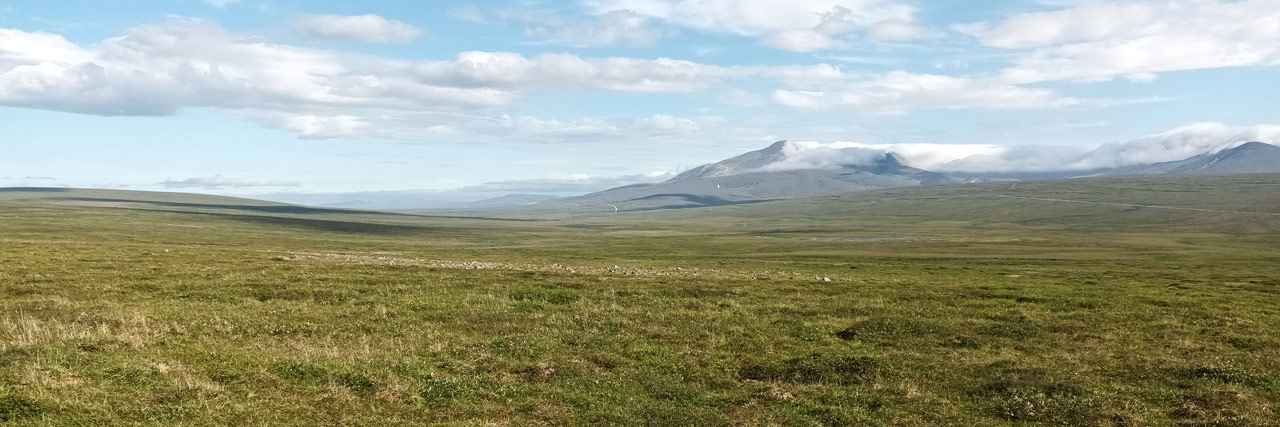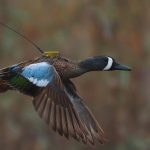← Back
The longest non-stop flight ever recorded for a landbird
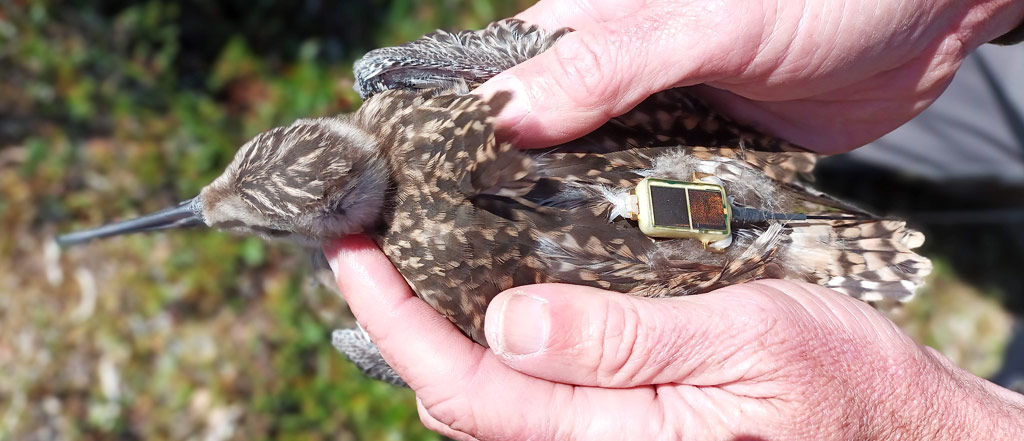
On 11 July 2022, in the grassy tundra northwest of Nome, Alaska, biologists Jesse Conklin and Dan Ruthrauff had found a brood of Bar-tailed Godwits. They fitted each of the three small chicks with a 0.75 g radio-transmitter, so that they could find the young birds again a few days later, still accompanied by their parents, but just a few days before they would become independent.
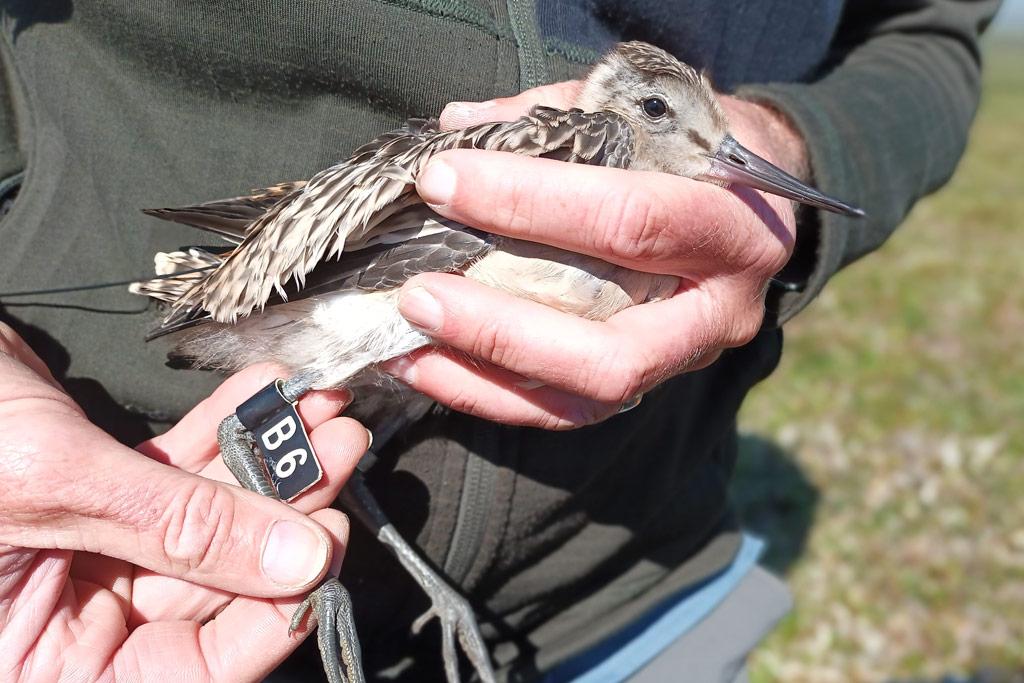 On 15 July, after a 3-mile hike from the original location and a long search, Jesse and Dan caught the grown-up godwits when they were an estimated 26 days old, weighed them (181, 186 and 200 g) and individually marked each with an engraved flag. From now on, they would be known as B3, B4, and B6.
On 15 July, after a 3-mile hike from the original location and a long search, Jesse and Dan caught the grown-up godwits when they were an estimated 26 days old, weighed them (181, 186 and 200 g) and individually marked each with an engraved flag. From now on, they would be known as B3, B4, and B6.
Then, they fitted the young birds with 5-g solar-powered Argos satellite-transmitters (Model PTT-100, Microwave Telemetry, Inc., USA) in the first attempt to track fledglings of this species on their first southbound migration across the Pacific Ocean.
Jesse and Dan returned home and we all watched, with great anticipation and a healthy portion of skepticism, the locations that popped up on the map. B3 and B4 never moved from the Nome area, their fate unknown, but on 5 August B6 flew from the Seward Peninsula across Norton Sound (nearly 200 km of open water) to the Yukon-Kuskokwim Delta. This is the area where the entire population is known to prepare for migration, so our hopes were high.
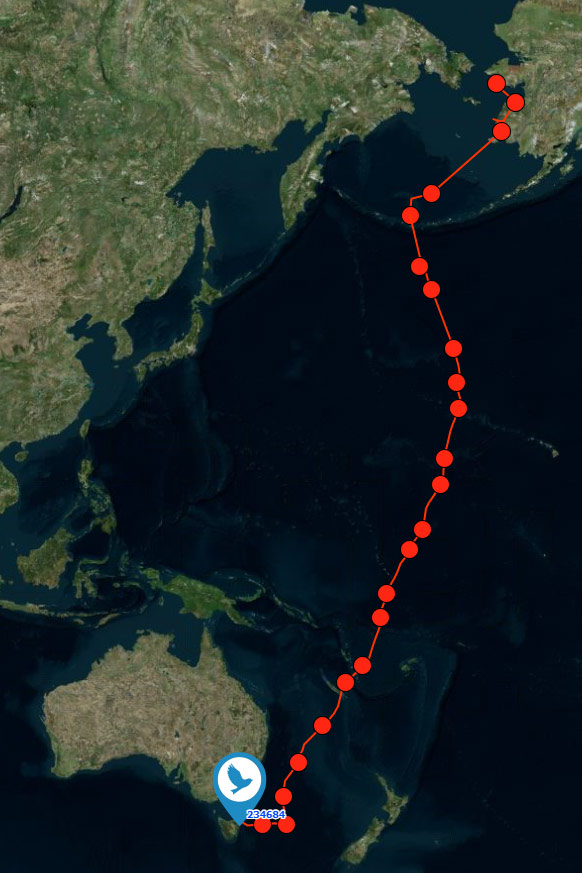 More than 2 months went by, and our mood changed from nail-biting nervousness to mild despair. The signal of B6 remained strong, but the bird didn’t move, and the adult godwits presumably had already long left. Then, on a fateful Thursday, 13 October, B6 left the coast of Alaska and moved south. Eleven days later, and after a sudden live-saving west-ward turn going with strong winds, it made landfall on the east coast of Tasmania. Estimated at 13,436 km, this is the longest non-stop flight ever recorded for a landbird.
More than 2 months went by, and our mood changed from nail-biting nervousness to mild despair. The signal of B6 remained strong, but the bird didn’t move, and the adult godwits presumably had already long left. Then, on a fateful Thursday, 13 October, B6 left the coast of Alaska and moved south. Eleven days later, and after a sudden live-saving west-ward turn going with strong winds, it made landfall on the east coast of Tasmania. Estimated at 13,436 km, this is the longest non-stop flight ever recorded for a landbird.
Jesse Conklin & Bart Kempenaers*
* Behavioural Ecology & Evolutionary Genetics Group, Max Planck Institute for Biological Intelligence
This project is a collaboration between the Max Plank Institute for Biological Intelligence in Seewiesen, Germany, the U.S Geological Survey, and the U.S. Fish and Wildlife Service, with further support from the East Asian-Australasian Flyway Partnership.
